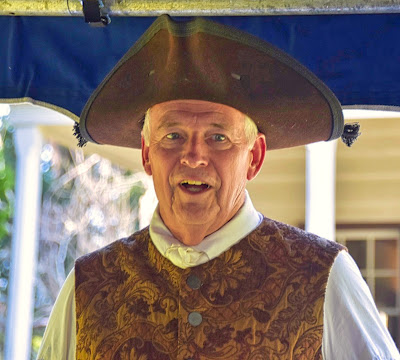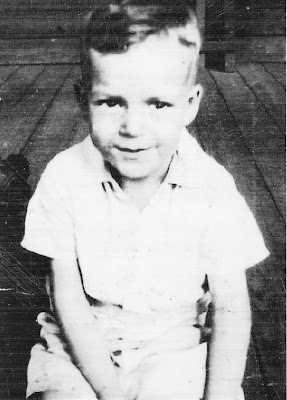Earlier this month, Williamsburg County paid tribute to two internationlly-known men with long-standing ties to the county by unveiling historical markers in their honor. The two men were the late film star Robert Mitchum and the very much alive Ernest Evans, better known to the world as Chubby Checker. In the next two weeks, we'll look at each of them, starting with Robert Mitchum, known for such movies as Thunder Road, Cape Fear, and The Night of the Hunter.
Actor Robert Mitchum
Mitchum's father, James Thomas Mitchum, known as Jimmy, was born near Lane, SC, in 1886. Although he was working at the Navy Yard and the family was living in Charleston in 1917, Robert was born at his mother's home in Bridgeport, CT. Jimmy Mitchum died in an accident at the Navy Yard two years later. His wife and children lived with Jimmy's sister in Williamsburg County for a time before moving back to Connecticut. However, Robert always felt strong ties to Lane and to his relatives here.
In 1991, he was in Charleston filming the pilot for an educational television series, written and directed by his younger brother, John. The Post-Courier sent a reporter to interview him. The article, which appeared in May 1991, noted that during a break in the filming, a "matronly woman" walked up to bench on which Robert Mitchum was sitting and bluntly asked, "Are you Robert Mitchum?" to which he just as bluntly replied, "Yes."
She then went further by asking if he was in Charleston to make a movie.
Mitchum, in his own enigmatic way," replied courteously, "Well, actually, ma'am, I thought I'd drop in to use the bathroom."
The woman nodded and said, "Oh," before walking away, "apparently satisfied with his answer."
Their interaction demonstrated why celebrity columnist Earl Wilson once wrote that Robert Mitchum was hands down the hardest person he had ever tried to interview–and he had been interviewing him for 39 years. Wilson wrote, "Mitchum's conversations are thrilling with unexpected allusions to geography, literature, and fights he's been in–but you come away with sealegs as though you've been in a storm."
Others described the actor as devilishly charming.
Mitchum visited in Lane periodically throughout his life. When he was a teenager, he and two friends from Connecticut once hitchhiked to South Carolina and camped in the woods near his Aunt Idell's home.
And when he was filming nearby, he made sure that cousins were able to visit him on set. In the late 1950s, 23 of them went to Asheville, NC, in cars that Robert Mitchum rented for them to visit the set of Thunder Road.
On one of his visits he made a brief appearance in Kingstree where one of his movies was playing
Lane was only two years old when Robert Mitchum's father Jimmy was born there. The town then had a 20-room boarding house, three hotels and heavy railroad traffic, according to a 1991 Post-Courier column, written by historian and attorney Ruth W. Cupp. While Jimmy Mitchum didn't live to see his son's climb to movie stardom, he himself was a talented to musician. And all three of his children worked in the movie industry. His daughter Annette, under the name Julie Mitchum, appeared in several films and later became a nightclub singer who entertained the troops overseas during World War II. His youngest child, son John, born several months after Jimmy's death, was a character actor for a number of years, appearing in many Westerns before he began to write and direct. In addition, Robert inherited his father's musical abilities. To hear him singing the Ballad of Thunder Road, click here.
When Robert and John Mitchum were in Charleston in 1991, they made the pilgrimage to Lane with one of their cousins. John, who apparently had no memories of Williamsburg County, later wrote the cousin to thank her, saying, "To walk the same ground, to see the same trees, to feel my past has helped fill a void that's been with me for 71 years."
Many of Robert Mitchum's cousins still live in Williamsburg County, including Kingstree Mayor Darren Tisdale. Robert's great-grandfather, Abe, is Mayor Tisdale's third-great grandfather.
The marker which stands in Lane's downtown park, fills a void that has existed for many years in Williamsburg County, where people have known of Robert Mitchum's ties here but those not related to the Mitchum family were fuzzy about the exact details of his connection to the area.

























.jpeg)









